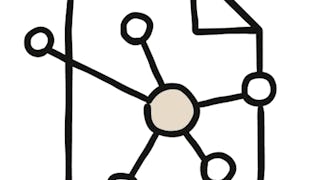In this course, you will learn about Model-Driven Programmability and its use of YANG data models to provide a standardized way to access network devices and their capabilities. You will be introduced to YANG's terminology and structures and the tools and protocols that rely on YANG, including NETCONF and RESTCONF. Additionally, you will learn how to use Python libraries to interact with NETCONF and RESTCONF-enabled systems. By the end of the course, you will have a comprehensive understanding of Model-Driven Programmability and YANG's importance in network automation.


Introducing Model-Driven Programmability
This course is part of Network Automation Engineering Fundamentals Specialization

Instructor: Cisco Learning & Certifications
2,098 already enrolled
Included with
(13 reviews)
Recommended experience
Skills you'll gain
Details to know

Add to your LinkedIn profile
11 assignments
See how employees at top companies are mastering in-demand skills

Build your subject-matter expertise
- Learn new concepts from industry experts
- Gain a foundational understanding of a subject or tool
- Develop job-relevant skills with hands-on projects
- Earn a shareable career certificate

There are 4 modules in this course
In this module, we will review the topics and what you will learn in this course.
What's included
1 video2 readings1 discussion prompt
Data models are abstract entities that organize elements of the data and standardize how the elements relate to each other. Network engineers interact with data models indirectly on a daily basis, as they navigate a command line to change or retrieve information. Knowing the structure and capabilities of these data models is crucial to unlocking the maximum potential of these new digital-ready network devices. YANG is the common language that is used to describe the capabilities of network devices and to create data models. This module begins to explore YANG and how it is used.
What's included
3 videos2 readings3 assignments
"Yet Another Next Generation" (YANG) is a very sophisticated and sometimes daunting concept to learn. To understand it better, the open-source community and manufacturers like Cisco have created tools and environments that can help you better understand and use YANG. In this section, you will examine the tools that can be used to learn about, and ease the consumption of, YANG.
What's included
4 videos3 readings4 assignments
NETCONF and RESTCONF are programmatic interfaces for network devices that allow you to manage network infrastructure programmatically. Using YANG data models, NETCONF and RESTCONF provide a standardized way to programmatically read and modify the configuration data of a network device and perform general operations on networking devices.
What's included
4 videos3 readings4 assignments
Earn a career certificate
Add this credential to your LinkedIn profile, resume, or CV. Share it on social media and in your performance review.
Instructor

Offered by
Explore more from Networking
 Status: Preview
Status: Preview Status: Free Trial
Status: Free TrialCisco Learning and Certifications
 Status: Free Trial
Status: Free TrialCisco Learning and Certifications
Why people choose Coursera for their career




Learner reviews
13 reviews
- 5 stars
76.92%
- 4 stars
23.07%
- 3 stars
0%
- 2 stars
0%
- 1 star
0%
Showing 3 of 13
Reviewed on Sep 11, 2024
The course was very helpful and setup with right modules.

Open new doors with Coursera Plus
Unlimited access to 10,000+ world-class courses, hands-on projects, and job-ready certificate programs - all included in your subscription
Advance your career with an online degree
Earn a degree from world-class universities - 100% online
Join over 3,400 global companies that choose Coursera for Business
Upskill your employees to excel in the digital economy
Frequently asked questions
To access the course materials, assignments and to earn a Certificate, you will need to purchase the Certificate experience when you enroll in a course. You can try a Free Trial instead, or apply for Financial Aid. The course may offer 'Full Course, No Certificate' instead. This option lets you see all course materials, submit required assessments, and get a final grade. This also means that you will not be able to purchase a Certificate experience.
When you enroll in the course, you get access to all of the courses in the Specialization, and you earn a certificate when you complete the work. Your electronic Certificate will be added to your Accomplishments page - from there, you can print your Certificate or add it to your LinkedIn profile.
Yes. In select learning programs, you can apply for financial aid or a scholarship if you can’t afford the enrollment fee. If fin aid or scholarship is available for your learning program selection, you’ll find a link to apply on the description page.
More questions
Financial aid available,


